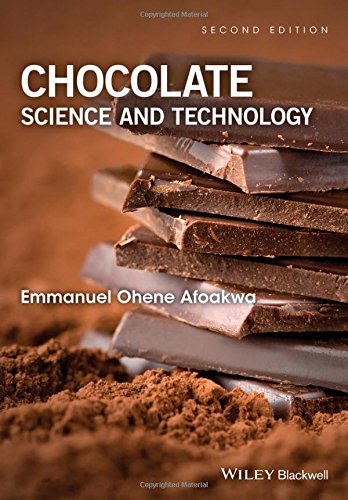

Most ebook files are in PDF format, so you can easily read them using various software such as Foxit Reader or directly on the Google Chrome browser.
Some ebook files are released by publishers in other formats such as .awz, .mobi, .epub, .fb2, etc. You may need to install specific software to read these formats on mobile/PC, such as Calibre.
Please read the tutorial at this link: https://ebookbell.com/faq
We offer FREE conversion to the popular formats you request; however, this may take some time. Therefore, right after payment, please email us, and we will try to provide the service as quickly as possible.
For some exceptional file formats or broken links (if any), please refrain from opening any disputes. Instead, email us first, and we will try to assist within a maximum of 6 hours.
EbookBell Team

0.0
0 reviewsThis second edition provides information on recent advances in the science and technology of chocolate manufacture and the entire international cocoa industry. It provides detailed review on a wide range of topics including cocoa production, cocoa and chocolate manufacturing operations, sensory perception of chocolate quality, flavour release and perception, sugar replacement and alternative sweetening solutions in chocolate production, industrial manufacture of sugar-free chocolates as well as the nutrition and health benefits of cocoa and chocolate consumption.
The topics cover modern cocoa cultivation and production practices with special attention on cocoa bean composition, genotypic variations in the bean, post-harvest pre-treatments, fermentation and drying processes, and the biochemical basis of these operations. The scientific principles behind industrial chocolate manufacture are outlined with detailed explanations of the various stages of chocolate manufacturing including mixing, refining, conching and tempering. Other topics covered include the chemistry of flavour formation and development during cocoa processing and chocolate manufacture; volatile flavour compounds and their characteristics and identification; sensory descriptions and character; and flavour release and perception in chocolate. The nutritional and health benefits of cocoa and chocolate consumption as well as the application of HACCP and other food safety management systems such as ISO 22,000 in the chocolate processing industry are also addressed. Additionally, detailed research on the influence of different raw materials and processing operations on the flavour and other quality characteristics of chocolates have been provided with scope for process optimization and improvement.
The book is intended to be a desk reference for all those engaged in the business of making and using chocolate worldwide; confectionery and chocolate scientists in industry and academia; students and practising f